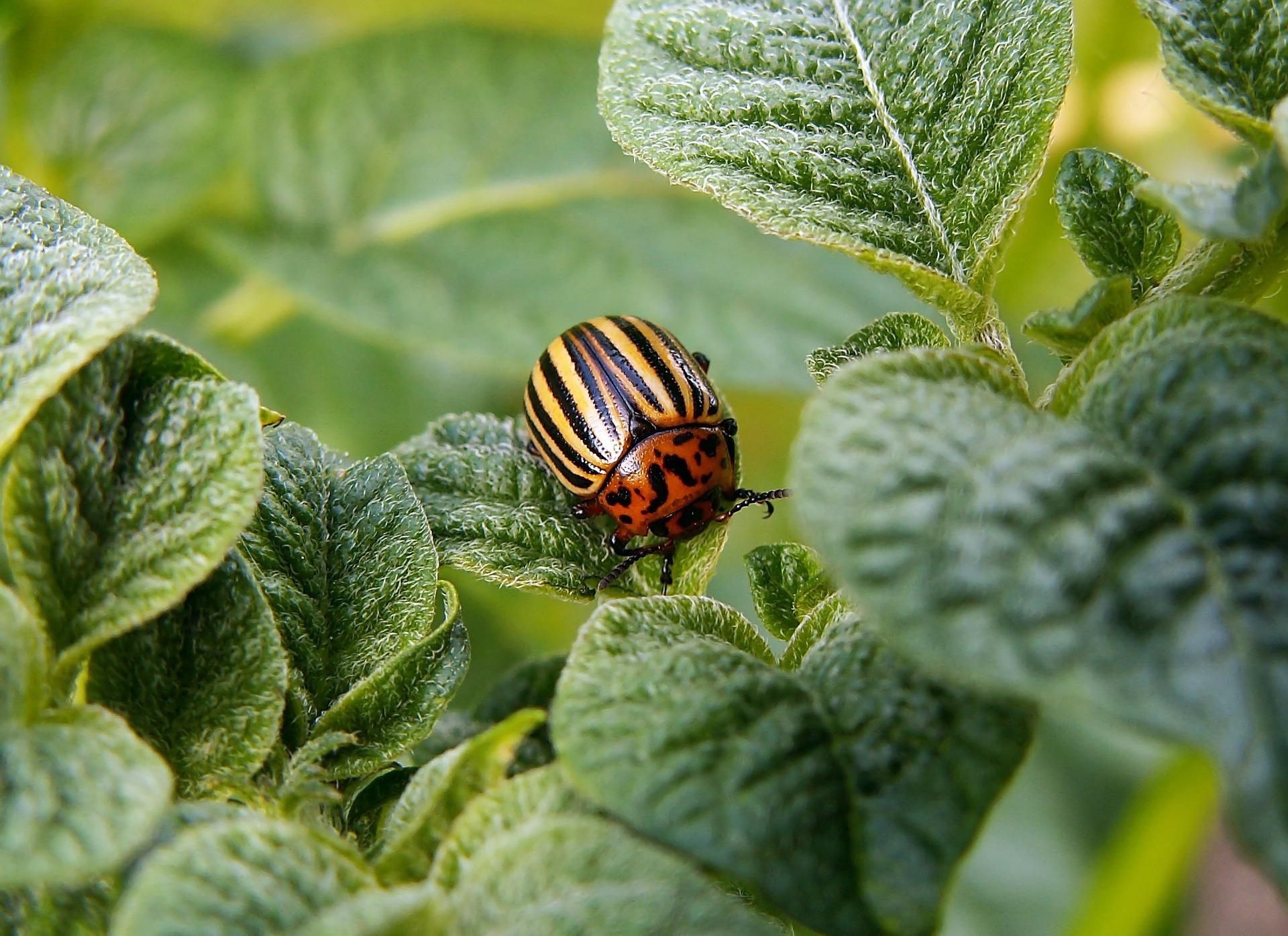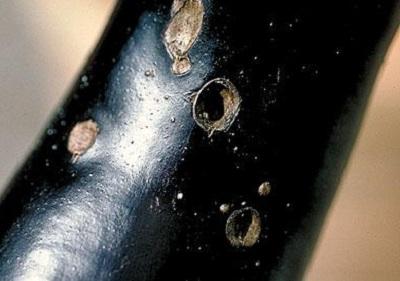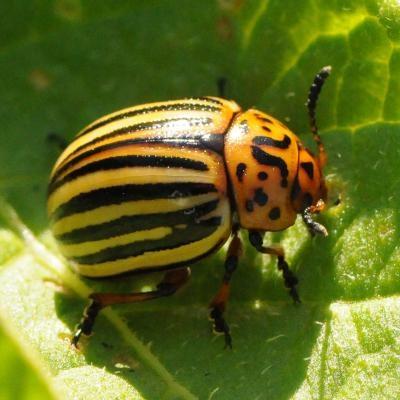
Photo: Dr. Michael J. Raupp
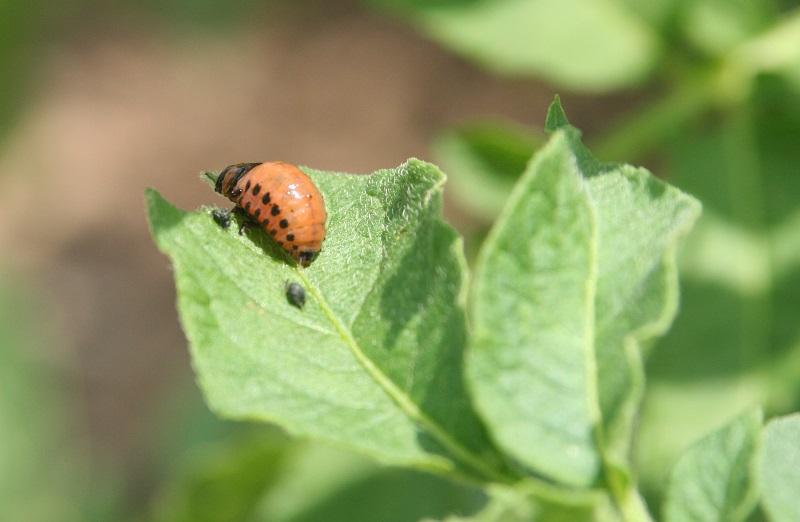
Appearance
- Eggs: Orange ovals attached on end on the lower surface of leaves, in rowed clusters of about 20-60.
- Larvae: Plump, brick red, humpbacked grubs turning orange, pink or tan; with black head and legs, and 2 rows of black spots along each side.
- Adults: Hefty, oval-shaped, and humpbacked with a hard shell, 1/3" long. Color is principally yellow, with ten lengthwise black stripes on the wings, and black markings on the reddish head and thorax.
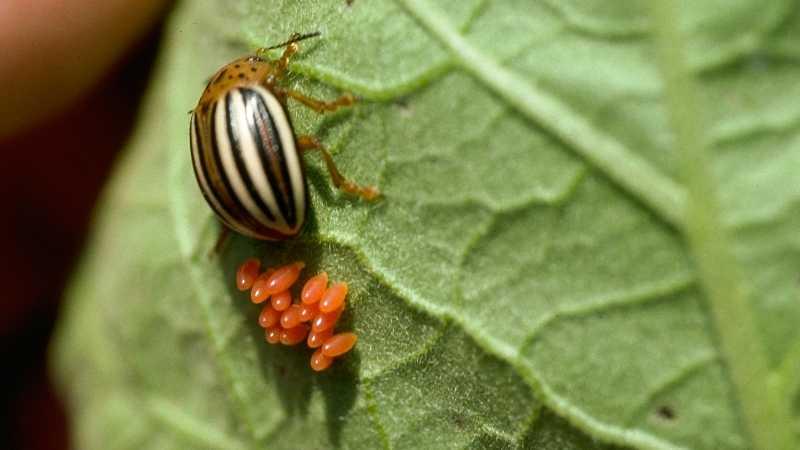
Life cycle/habits
- Adults overwinter below the soil surface near host plants and emerge in late April-early May.
- Eggs are laid under potato and tomato leaves (about the time potato shoots are emerging).
- Both larvae and adults feed on leaves and fruit. After four instars, larvae pupate in the soil.
- Two damaging generations yearly.
Host plants
- Eggplant is a favorite. Also eats potato, pepper, tomato, and other solanaceous plants.
Signs/symptoms
- Chewing of leaves, terminals, and fruit by larvae and adults. Most damaging when plants are young. After defoliation is complete, stems and even potato tubers may be gnawed.
